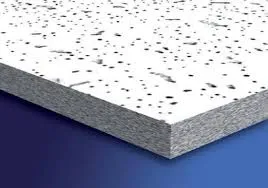Nov . 05, 2024 05:39 Back to list
suspended ceiling cross tee
Understanding Suspended Ceiling Cross Tees A Comprehensive Guide
Suspended ceilings, often referred to as drop ceilings or false ceilings, are widely used in both residential and commercial buildings for various purposes. One of the most crucial components of a suspended ceiling is the cross tee, which plays a significant role in the structural integrity and aesthetic appeal of the ceiling. This article will delve into the function, types, installation, and benefits of suspended ceiling cross tees.
What Are Cross Tees?
Cross tees are horizontal members used in suspended ceiling systems that run perpendicular to the main runner beams. They are integral in forming the grid framework that supports the ceiling tiles or panels. Cross tees create a modular layout that allows for easy installation and maintenance of ceiling tiles.
These components come in various lengths, typically ranging from two feet to four feet, depending on the design specifications of the ceiling. Cross tees work in conjunction with main tees (the longer, primary structural members) to create a stable and reusable framework.
Function and Importance
The primary function of cross tees is to provide support and alignment for the ceiling tiles. They help maintain the spacing between tiles while ensuring that the load is evenly distributed across the grid. In addition to their structural role, cross tees enhance the aesthetic appeal of the ceiling, allowing for various design configurations.
Furthermore, they facilitate the integration of lighting fixtures, ventilation grilles, and other ceiling-mounted elements. The modular system allows for easy access to the plenum space above the ceiling, making it straightforward to install, repair, or replace electrical wiring and HVAC components.
Types of Cross Tees
Cross tees are available in a variety of materials, the most common being
1. Metal Cross Tees Typically made of steel or aluminum, metal cross tees are renowned for their durability and strength. They are resistant to warping and are often used in environments that require higher load-bearing capacity.
2. Vinyl and PVC Cross Tees These lightweight alternatives are resistant to moisture, making them suitable for high-humidity environments such as bathrooms or kitchens. However, they may not support heavy fixtures as effectively as metal options.
suspended ceiling cross tee

Installation Guidelines
Installing cross tees requires precision and planning. Here’s a brief overview of the installation process
1. Planning Begin by measuring the ceiling area and determining the grid layout. Mark the positions of the main tees on the ceiling.
2. Installing Main Tees Secure the main tees to the ceiling using appropriate anchors, ensuring they are level.
3. Inserting Cross Tees Once the main tees are in place, slide the ends of the cross tees into the slots on the main tees, creating a grid. Ensure each cross tee is level with the adjacent main tees.
4. Adding Ceiling Tiles Once the grid structure is complete, carefully place the ceiling tiles into the openings, ensuring a snug fit.
5. Final Adjustments Double-check for uniformity and make any necessary height adjustments before finishing.
Benefits of Suspended Ceiling Cross Tees
Suspended ceiling cross tees offer several advantages, including
- Aesthetic Versatility Cross tees allow for unique designs and configurations, enhancing the overall visual appeal of a space. - Easy Maintenance The modular nature of the ceiling grid permits quick access to utilities and systems installed above the ceiling. - Acoustic Performance With the right ceiling tiles, suspended ceilings can effectively reduce noise levels in a space, creating a more comfortable environment.
In conclusion, suspended ceiling cross tees are essential components that significantly contribute to the functionality and appearance of suspended ceilings. Understanding their role and installation can help homeowners and builders create aesthetically pleasing and efficient ceiling systems that serve a variety of purposes.
-
Quality Ceiling Trap Doors & Access Panels | Easy & Secure AccessNewsAug.30,2025
-
Durable Ceiling T Grid Systems | Easy InstallationNewsAug.29,2025
-
PVC Gypsum Ceiling: Durable, Laminated Tiles for Modern SpacesNewsAug.28,2025
-
Pvc Gypsum Ceiling Is DurableNewsAug.21,2025
-
Mineral Fiber Board Is DurableNewsAug.21,2025
-
Ceiling Tile Clip Reusable DesignNewsAug.21,2025







